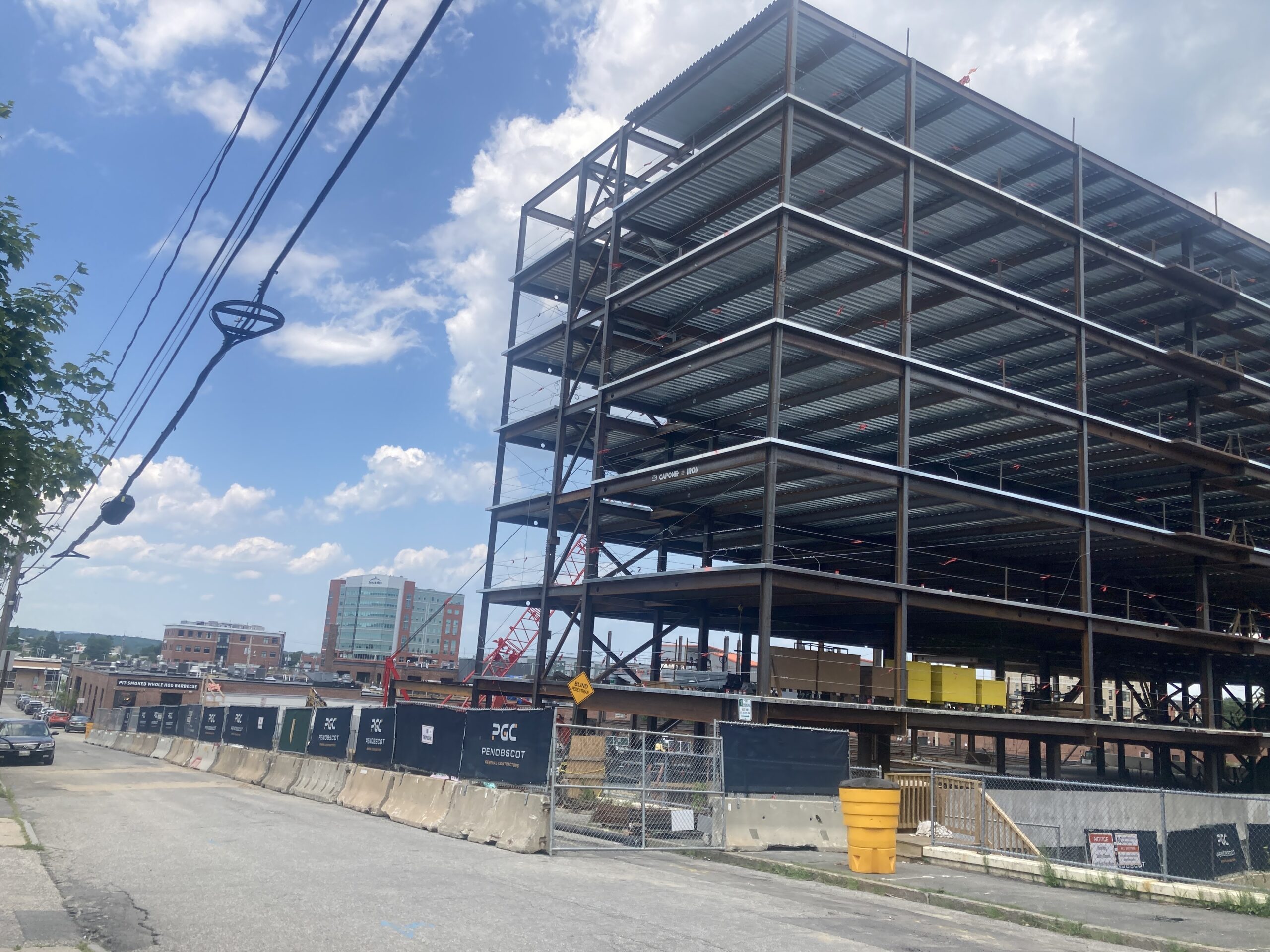Physical Address
304 North Cardinal St.
Dorchester Center, MA 02124
Physical Address
304 North Cardinal St.
Dorchester Center, MA 02124
A new paper in the Journal of Development Economics by Liming Chen, Rana Hasan, Yi Jiang, and Andrii Parkhomenko estimates the welfare gains of Transit Oriented Development in Bengaluru. The Bengaluru metro or the Namma metro is around 170Km long including the planned sections. Bengaluru has low building heights and the paper’s counterfactual depends on relaxing FSI/FAR from their current level to 2 (only 2!) around 500 meters of the metro line. The paper finds “The complementarity between TOD and the metro unlocks additional gains equivalent to about $64 million per year or one-half of annual operating costs of the metro system.” Paper reference:Chen, L., Hasan, R., Jiang, Y., & Parkhomenko, A. (2024). Faster, taller, better: Transit improvements and land use policies. Journal of Development Economics, 103322.
The conventional wisdom (based on Census estimates) seems to me that urban cores have lost population since COVID began, but are beginning to recover. But mid-decade Census estimates are often quite flawed. These estimates are basically just guesses based on complicated mathetmatical formulas, and often diverge a bit from end-of-decade Census counts. Is there another way to judge the popularity of various places? Perhaps so. I just uncovered a database of real estate price trends from Redfin. Because housing supply is often slow to respond to demand trends, housing prices probably reflect changes in demand. What do they show? First let’s look at the most expensive cities: San Francisco and New York City where I live now. If conventional wisdom is accurate, I would expect to see stagnant or declining housing prices in the city and some increase in suburbia. In Manhattan, the median sale price for condos and co-ops was actually lower in 2024 than it was in mid-2019, declining from $1.25 million in August 2019 to $1.05 million in August 2024.* Similarly, in the Bronx multifamily sale prices decreased slightly (though prices for single-family homes increased). By contrast, in suburban Westchester County, prices increased by about 30 percent (from just under 250k to 325k). Similarly, in Nassau County prices increased from 379k to 517k, an increase of well over one-third. So these prices suggest something like a classic suburban sprawl scenario: stagnant city prices, growing suburban prices. In San Francisco, by contrast, property values declined everywhere. City prices declined from $1.2 million in August 2019 to just under $1 million today; in suburban Marin County, the median price declined from $633k to $583k. So sale price data certainly supports the narrative of flight from expensive cities. What about places that are dense but not quite as expensive? But […]

Everyone agrees that delays and uncertainty are costly for housing development. But it’s very hard to put a number on it. The obvious costs (lawyer hours, interest over many months) are surely an underestimate. Professors Stuart Gabriel and Edward Kung have a useful answer, at least for Los Angeles: As a lower bound, simply by pulling forward in time the completion of already started projects, we estimate that reductions of 25% in approval time duration and uncertainty would increase the rate of housing production by 11.9%. If we also account for the role of approval times in incentivizing new development, we estimate that the 25% reduction in approval time would increase the rate of housing production by a full 33.0%. Delay and uncertainty go together for two reasons. One is that many delays are caused by uncertain processes, like public hearings and discretionary negotiations. The other is that market conditions change, so a developer chasing a hot market in Los Angeles is probably too late – by the time she’s leasing up, the market will have changed.

Jane Jacobs wasn’t optimistic about the future of civilisation. ‘We show signs of rushing headlong into a Dark Age,’ she declares in Dark Age Ahead, her final book published in 2004. She evidences a breakdown in family and civic life, universities which focus more on credentialling than on actually imbuing knowledge in its participants, broken feedback mechanisms in government and business, and the abandonment of science in favour of ‘pseudo-scientific’ methods. Jacobs’ prose is, as always, rich, convincing and successful in making the reader see the importance of her claims. Yet the argument that we are spiralling into a new Dark Age, similar to that which followed the fall of the Roman Empire, is not quite complete and I remain unconvinced that the areas she identified point towards collapse as opposed to merely things we could, and should, work to improve. Let us start with the idea that families are ‘rigged to fail,’ as she puts it in chapter two. Jacobs, urbanist at heart, cites ‘inhumanely long car commutes’ stemming from the disbanding of urban transit systems, rising housing costs, and a breakdown in ‘community resources’ – the result of increasingly low-dense forms of urban development – as a significant reason why families are now set up for failure. She suggests our days are filled with increasingly vacuous activities, leading to the rise of ‘sitcom families’ which ‘can and do fill isolated hours’ at the expense of ‘live friends.’ That phenomenon has now been replaced by the ‘smartphone family’ where time spent on TikTok, and consuming other forms of digital media have supplanted the ‘sitcom’ family of the past. There has been significant literature on the detrimental effects of digital technologies to our physical and mental health, not least in Jonathan Haidt’s most recent book, The Anxious Generation. A similar picture is painted by Timothy Carney in […]
I recently ran across an interesting discussion on Twitter about housing costs. Someone praised Chicago’s low housing costs, and someone else responded that because Chicago’s most troubled neighborhoods are so unusually dangerous and disinvested (compared to the most troubled parts of a safer city like New York), the low costs of these areas artificially deflated citywide averages. To put it another way, to compare Chicago and New York you should look at comparable neighborhoods rather than regionwide averages. For example, one reasonable comparison might be between Chicago’s reasonably desirable inner suburbs and New York’s. I picked four suburbs that I have visited and that are reasonably close to city boundaries: Great Neck and Cedarhurst on the New York Side, Skokie and Evanston on the Chicago side. According to Trulia.com, the cheapest two bedroom condo* (other than one that clearly needs major renovations) in Evanston sells for $115,000 and the cheapest in Skokie for $165,000. By contrast, Great Neck condos start at around $350,000, and Cedarhurst prices are similar. Similarly, elite intown areas are cheaper in Chicago. I looked at Chicago’s Lakeview, where I spent part of my honeymoon five years ago; two-bedroom units there start at $235,000. By contrast, in Manhattan’s Upper West Side such units start at $730,000 (not counting units that require extensive renovation or are income-restricted). To sum up: regional averages do seem to reflect the reality of housing costs, at least in these two cities. *I picked two bedroom condos for the somewhat arbitrary reason that I currently live in a two-bedroom apartment. *

“Wow!” the reporter said, “I knew you from Milton, but I didn’t know you were from East Milton. Tell me what it feels like?” Well, until last week it was not that dramatic. East Milton is an old railroad-commuter neighborhood favored by affluent Boston Irish. It’s separated from the City of Boston by the Neponset River estuary and from the rest of Milton by a sunken interstate highway that makes it more congested and big-city than the rest of town. MBTA Communities In January 2021, Massachusetts passed the first transit-oriented upzoning law of the YIMBY era, now called “MBTA Communities,” “MTBA-C”, or “Section 3A”. Implementing regulations assigned a multifamily zoning capacity to each town. Milton was always going to be one of the toughest cases for MBTA Communities. The northern edge of town is served by the Mattapan Trolley, which John Adams rode to the Boston Tea Party links up to the Red Line at Ashmont. The trolley makes Milton a “rapid transit community”, which means it has to zone for multifamily units equal to 25% of its housing stock. Among the dozen towns in the rapid transit category, Milton is the only one where less than a quarter of current housing units are multifamily; it also has few commercial areas to upzone. East Milton dissents East Milton voters went to the polls on Wednesday and led a referendum rebuke of the plan. In Ward 7, it wasn’t close: 82% opposed the rezoning. The Boston Globe offered a helpful breakdown of the surprisingly varied voting: There are several hypotheses as to why the neighborhood went against rezoning so hard, all probably played a role. East Milton was assigned more than half the net new multifamily zoning capacity despite lacking good transit access. The neighborhood has been in a contentious, multiyear […]
In December, I was asked to testify at a House Subcommittee on Housing and Insurance hearing on government barriers to housing construction and affordability. I provided examples of reforms to land regulations that have facilitated increased housing supply, particularly relatively low-cost types of housing, including multifamily, small-lot single-family, and accessory dwelling units. Following the hearing, I received a good question from Congresswoman Sylvia Garcia. She points out that, as in the country as a whole, the share of cost burdened renters has increased in recent years in Houston, in spite of land use liberalization. She asked what local policymakers could do to improve affordability for low-income residents. When market-oriented housing researchers point to Houston’s relatively light-touch land use regulations as a model for other U.S. localities to learn from, its declining affordability may cause skepticism. Houston, however, has fared better than many other cities in housing affordability for both renters and homebuyers. While Houston is the only major U.S. city without use zoning, it does have land use regulations that appear in zoning ordinances elsewhere, including minimum lot size, setback, and parking requirements. These rules drive up the minimum cost of building housing in Houston. However, Houston has been a nationwide leader in reforming these exclusionary rules over the past 25 years. Houston policymakers have enacted rule changes to enable small-lot development and, in parts of the city, they have eliminated parking requirements. In part as a result, Houston’s affordability is impressive compared to peer regions. As the chart below shows, Houston has the lowest share of cost-burdened renter households among comparable Sun Belt markets for households earning 81% to 100% of the area median income. Only San Antonio and Austin have lower rates of rent burden among households earning 51% to 80% of the area median income. At the […]

I don’t know how successful artificial intelligence will be. But let’s agree, for the moment, to consider a reasonably optimistic case where AI delivers significant productivity gains across a broad range of tasks – but not in a way that radically alters our Newtonian constraints. What would happen to housing economics and, consequently, housing politics? TL;DR Construction won’t be much affected by AI. Consumers will be richer and spend a bigger share of their incomes on housing. The stakes around housing policy will only grow. Inscriptibility Karl Marx divided the economic world into capital and labor. More recent economists have frequently (and self-regardingly) divided labor into low-skill and high-skill. In an AI world, we need to start talking about inscriptible and uninscriptible labor. I’m using a circular definition on purpose – AI will replace inscriptible labor because inscriptible labor is the type that AI is good at replacing – because I have only a fuzzy idea what AI will be good at. (A diversion) (Why inscriptible rather than legible, in a James C. Scott sense? I thank Bard for the suggestion. Think about visual art – AI is probably no better than humans at guessing what nuances a human artist intended, but it can produce human-quality visual art rich with nuance. Since AI’s value is partly predicated on repetition speed, it will thrive in arenas where failures are costless. Thus, AI may be formulating 99% of new drugs in a few years even if nobody trusts it to perform a simple surgery. That’s an inscriptibility difference, not a legibility difference. The most inscriptible human tasks are presumably those that simpler software replaced long ago, usually called “routine.” The big surprise of 2023 AI was the advances that software made with tasks we have considered creative. The “routine” concept was valuable […]

WASHINGTON – David Paitsel, 42, a former FBI agent, and Brian Bailey, 53, a D.C. real estate developer were sentenced today on bribery and conspiracy charges for their role in schemes involving confidential information held by the D.C. Department of Housing and Community Development United States Attorney’s office There are plenty of housing laws you can break. But these grifters were busted only for bribing a city official for information. Otherwise, they used the housing law – the most innocent-sounding of all housing laws – correctly. Washington DC has a strong Tenant Opportunity to Purchase Act (TOPA). When a landlord sells, tenants have the right to match any offer, conceivably buying their own building. That never happens. But TOPA also allows tenants to sell their rights to literally anyone else. The law treats the new owner of the TOPA rights with the same exaggerated deference as a tenant. The TOPA grift goes like this: A TOPA shark, like Paitsel and Bailey, approaches tenants whose building is on the market. The “approach”, as I’ve witnessed it, can be a hand-scrawled note placed in the tenants doors or mailboxes. The tenants rarely know the mechanics of buying a house, let alone utilizing an obscure city-specific TOPA scheme that would have to involve collective action among many tenants. So the sharks offer the tenants a few hundred dollars for their rights. If the offer is accepted, the shark informs the landlord. Now suppose a prospective buyer comes along and offers $1,200,000 for a D.C. sixplex. The landlord must inform the shark, who now has the right to match any bona fide offer on the property. But the shark has no interest in buying – he just demands ten or twenty thousand dollars to surrender the rights. If the landlord resists extortion, the shark […]
Since 1973, the US Census Bureau has administered the American Housing Survey (AHS) in odd-numbered years. Surveyors ask questions about the quality and value of respondents’ housing, and have a battery of questions for the subset of respondents who moved recently, asking about their search process. The AHS regularly adds new questions and rephrases old ones from year to year. In 2021, they rolled out a group of three new questions. One asks recent movers whether they spent more or less than a month searching for their new home. This is the AHS’s first-ever variable dealing with search time. The other two, which are similar to questions asked in previous years, ask about search scope: whether respondents looked for housing in neighborhoods besides the one they ended up moving to, and whether they looked at other housing units in the same neighborhood they moved to. In analyzing these new questions within the largest 15 metro areas in the US, I found a curious and hard-to-explain relationship. Search time – the binary variable of taking more or less than a month to look for a home – seems to be predicted by the population of a metropolitan area (with r=0.57 and p > |t| = 0.026), whereas search scope in the sense of looking at multiple neighborhoods or multiple units within a neighborhood seems to be predicted by the cost of housing as gathered from 2021 Zillow data (for looking at multiple neighborhoods, r=0.65 and p > |t| = 0.009; for looking at multiple units, r=0.68 and p > |t| = 0.007). The inverse set of relationships are much weaker. Price and likelihood of taking over a month to search are positively correlated, but the relationship is not statistically significant; the same is true of the relationship between metro population and […]